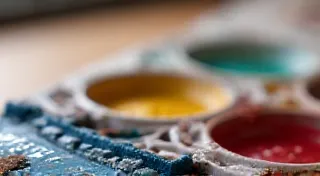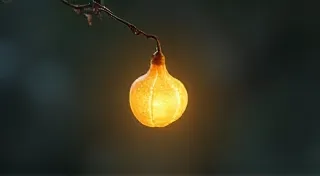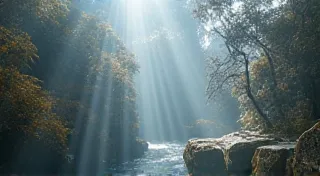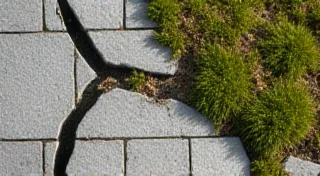The Glass Labyrinth: Designing Miniature Greenhouses for Delicate Blooms
There's a quiet poetry to restoration, a reverence for the hands that shaped something beautiful, and a deep satisfaction in bringing it back to life. This feeling resonates deeply with the meticulous craft of miniature gardening, particularly when we consider the vulnerability of our tiny plants. My grandfather, a skilled accordion repairman, taught me this reverence. He’s spent decades patiently coaxing melodies back into those complex, bellows-driven instruments. Each tiny reed, each carefully fitted valve, held a history. The feeling of holding a perfectly restored accordion, feeling the slight resistance of the bellows, hearing the resonant tone – that's akin to nurturing a thriving miniature garden. And just as an accordion needs protection from the elements, so too do many of our miniature blooms.
Miniature greenhouses, in their own way, are miniature echo chambers of botanical shelters. They represent a blend of practicality and artistic flourish, offering a way to safeguard delicate plants while adding a charming detail to our dollhouse landscapes. These aren’t just structures; they’re narratives, hinting at a hidden world of horticultural care within the miniature realm.
The Historical Roots of Miniature Glass Shelters
The concept of controlled environments for plants isn't new, of course. Early greenhouses, born of necessity and scientific curiosity, were often grand Victorian structures of glass and iron. The Victorians' obsession with exotic flora and experimentation fueled their development. But even before that, the desire to protect precious plants was evident. Portable orangeries, often glass-covered carts, allowed wealthy households to transport citrus trees and other sensitive species. This tradition, scaled down for our dollhouses, gives our miniature greenhouses a sense of historical depth, a tangible link to a larger legacy.
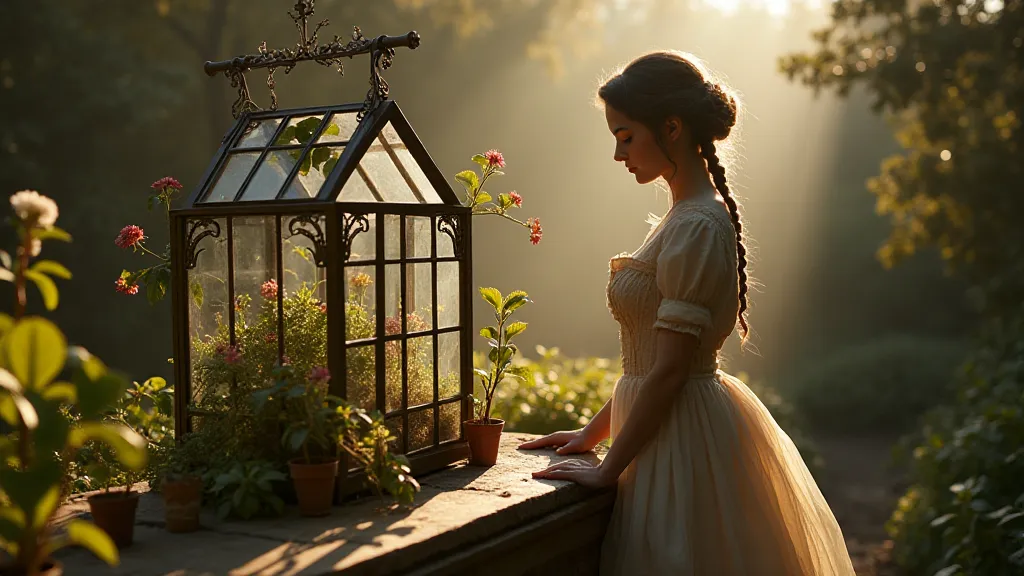
Materials and Construction: Bringing Your Vision to Life
Building a miniature greenhouse doesn’t require advanced carpentry skills. Simplicity and resourcefulness are key. Common materials include balsa wood for the frame, clear acrylic or styrene for the glazing, and even recycled glass jars or bottles – with careful cutting, of course – for a wonderfully rustic feel. The scale will dictate the precision required. For 1:12 scale dollhouses, meticulous measurements are essential. Larger scales (1:24, 1:48) offer more forgiveness, but maintaining visual consistency is still paramount. Consider how the chosen materials might complement other elements within your miniature world. For example, a weathered wood frame paired with recycled glass evokes a different aesthetic than a sleek acrylic structure.
The foundation is crucial. A sturdy base, often made of layered balsa or a small wooden plaque, provides stability. From there, the frame can be constructed using carefully cut and glued balsa strips. Consider using mitered corners for a more professional look. Acrylic or styrene sheets are then carefully cut to size and glued in place, creating the transparent walls and roof. Hinges, often miniature brass findings, can be used to create a door or roof that opens, allowing for easy access and ventilation. As with all miniature projects, planning the construction process helps anticipate potential challenges and ensure a smooth, efficient build.
Designing for Plant Health: Humidity, Ventilation, and Light
A beautiful greenhouse isn’t just about aesthetics; it's about creating a viable ecosystem for our miniature plants. Humidity is a critical factor. Many miniature plants, particularly ferns and mosses, thrive in humid environments. Regular misting helps, but the enclosed space of the greenhouse naturally traps moisture. Ventilation is equally important to prevent fungal diseases. Small, strategically placed holes can provide airflow without compromising the overall humidity levels. You can even consider a tiny, manually operated fan – a truly remarkable detail!
Light is, of course, the lifeblood of any plant. Position your greenhouse near a window or under a grow light to ensure adequate illumination. Be mindful of direct sunlight, which can scorch delicate leaves. Experiment with different placements to find the optimal balance of light and shade. Consider using translucent glazing to diffuse the light and create a softer, more even distribution. It’s a delicate dance, balancing the need for light with the protection from harsh rays – much like understanding the careful shaping involved in miniature bonsai techniques.
For a deeper dive into the world of miniature moss cultivation, remember that these tiny plants are highly sensitive. They require consistent moisture, low light, and a specific pH balance in the soil. Creating a miniature moss garden within your greenhouse can be incredibly rewarding, adding a touch of wildness and tranquility to your miniature landscape. The entire process speaks to an understanding of delicate ecosystems – a concept closely related to the artistry of recreating natural environments, like those found in Echoes of the Wild: Recreating Forest Landscapes in Miniature Terrariums. If you're thinking about automating the care of your miniature garden, you might want to explore The Clockwork Bloom: Automating Miniature Garden Irrigation for innovative solutions.
Scale Model Flower Pots and Accessories: The Finishing Touches
The details are what truly elevate a miniature greenhouse from a simple structure to a charming scene. Tiny scale model flower pots, crafted from clay or resin, add a touch of authenticity. Miniature tools, such as tiny watering cans and trowels, suggest a diligent gardener tending to their delicate charges. Consider adding a miniature bench or table to create a cozy and inviting atmosphere. Think about how color choices can further enhance the scene; carefully selected hues can evoke specific moods and tell a story about the miniature gardener's passion.
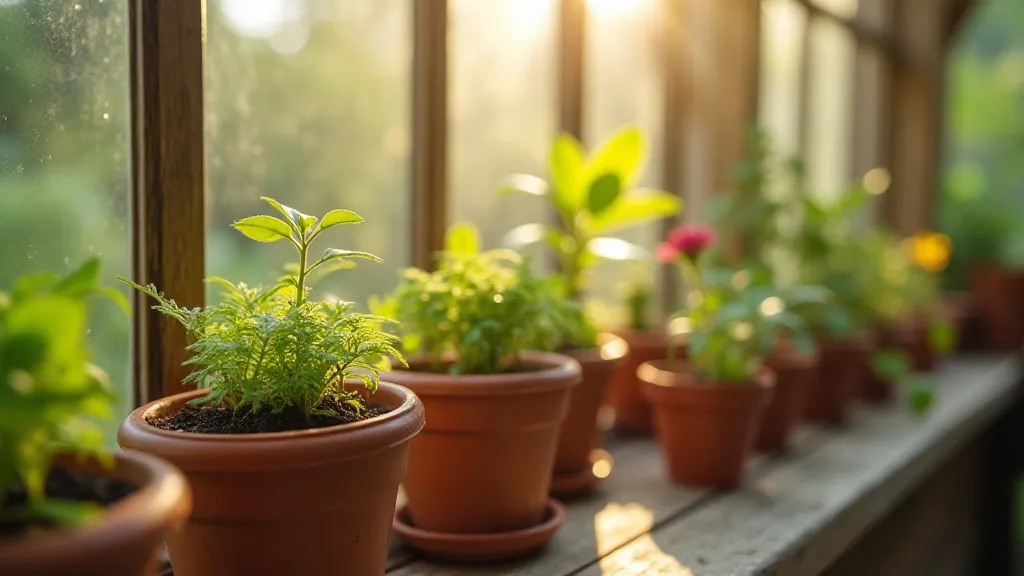
Terrarium Building Guide: A Related Art Form
Terrarium building shares a strong connection to miniature greenhouse design. Both focus on creating self-contained ecosystems. While terrariums are often sealed, miniature greenhouses are typically ventilated. However, the principles of layering substrate, selecting appropriate plants, and maintaining humidity and light apply to both. A small, sealed terrarium placed *within* your miniature greenhouse could be a wonderfully intricate addition. The combination of open and closed environments offers a unique visual contrast and adds another layer of complexity to your miniature world. Beyond aesthetics, understanding the principles of light and color, a vital skill in terrarium building, also informs the broader design choices of your miniature greenhouse and the surrounding landscape. For example, the careful mapping of color harmonies that creates a successful miniature scene is a skill also readily applied to terrarium design.
Creating Miniature Bonsai Techniques: A Study in Patience
The art of miniature bonsai is another invaluable skill for the miniature gardener. Bonsai, with its focus on shaping and controlling the growth of trees, requires an incredible amount of patience and attention to detail. Applying these techniques to your miniature plants allows you to create stunningly realistic miniature trees and shrubs. A miniature bonsai pine nestled within a miniature greenhouse is a truly captivating sight. Mastering this technique isn't easy, but the results are undeniably rewarding. It's a pursuit that demands a deep respect for the natural world and a keen eye for detail, echoing the principles found in the broader field of The Cartographer's Palette: Mapping Color Harmonies in Miniature Scenes.
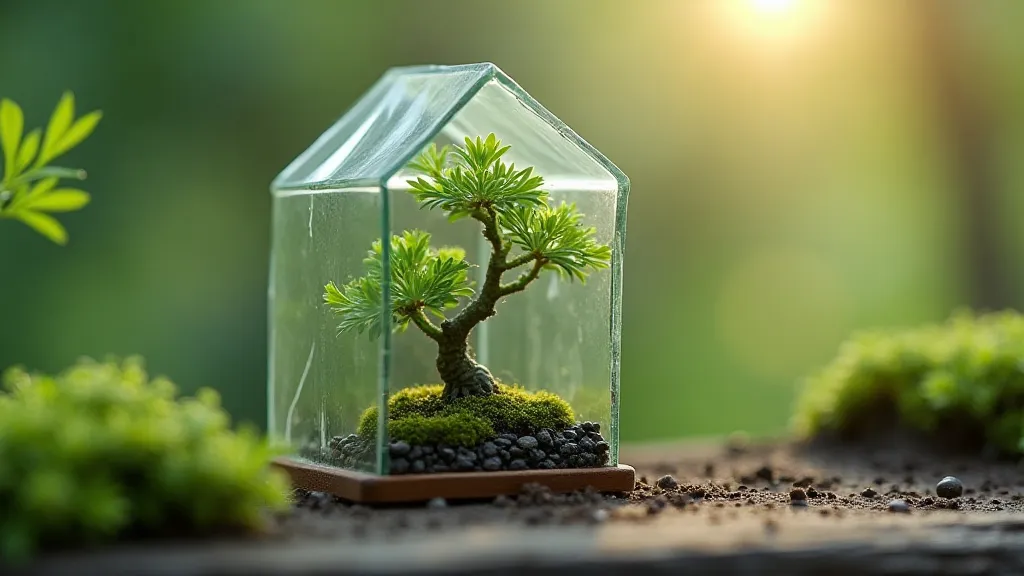
Building a miniature greenhouse is more than just a craft project; it’s a chance to connect with history, to nurture life, and to unleash your creativity. And while the meticulous process of miniature irrigation may seem daunting, innovative solutions exist for those who wish to automate this aspect of their miniature garden. Consider the potential for a miniature, clockwork irrigation system – a testament to ingenuity and a truly remarkable addition to your miniature world. For those intrigued by such innovations, exploring The Clockwork Bloom: Automating Miniature Garden Irrigation can provide further inspiration.
Like my grandfather coaxing music from an old accordion, we find a deep satisfaction in bringing beauty and life into the miniature world. It’s about the process, the precision, and the quiet joy of watching something flourish under our care.

